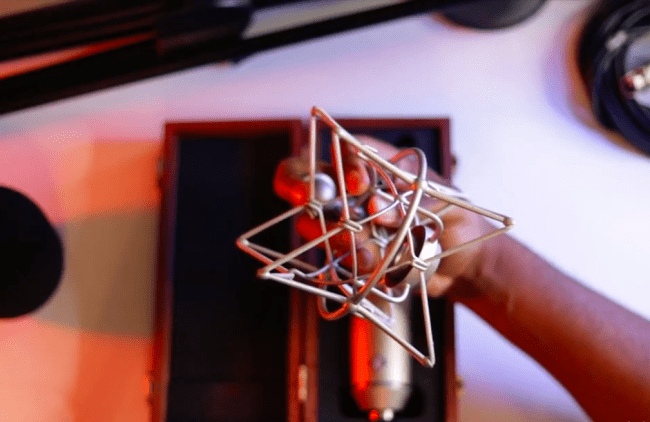Shock Mounts Excellence: Boost Your Audio Quality Instantly
Elevate Your Sound with a Superior Shock Mount

Achieving top-notch audio quality is crucial for anyone involved in recording, broadcasting, or live performances. The shock mounts is one often overlooked yet vital tool in your audio arsenal. This comprehensive guide will dive deep into what a shock mount is, how it works, the different types available, and why investing in a high-quality one can transform your audio experience.
What is a Shock Mount?
A shock mount is a device that isolates a microphone from physical vibrations, preventing these vibrations from being captured in your audio recordings. It typically consists of a frame that holds the Microphone in place using elastic or rubberized materials, which absorb and dissipate vibrations from the environment.
Why You Need a Shock Mount
Investing in a shock mount can drastically improve the clarity and quality of your recordings. Here’s why:
- Eliminates Unwanted Noise: By isolating the Microphone from vibrations caused by movements or environmental factors, a shock mount helps eliminate unwanted noise.
- Improves Audio Clarity: The Microphone captures cleaner audio with reduced interference.
- Professional Quality: For severe audio work, such as music production, podcasting, or broadcasting, a shock mount is essential for achieving professional-quality sound.
How Does a Shock Mount Work?
Shock mounts work on the principle of isolation. They use elastic bands or rubber to suspend the Microphone within a frame. This suspension system absorbs vibrations before they reach the microphone capsule, preventing these vibrations from being recorded as noise.
Types of Shock Mounts
Various shock mounts are designed to cater to different microphone types and recording needs. Here’s a look at some of the most common ones:
- Cat’s Cradle Shock Mounts
Description: These are the most common shock mounts for large diaphragm condenser microphones. They use elastic bands to hold the Microphone within an outer frame.
Pros:
- Excellent isolation from vibrations.
- Widely available and often included with high-end microphones.
Cons:
- Elastic bands can wear out over time and require replacement.
- Plastic Elastomer Suspension Shock Mounts
Description: These mounts use specially designed rubber (elastomers) instead of elastic bands for suspension.
Pros:
- More durable than elastic bands.
- Provides equal or better shock absorption.
Cons:
- It can be more expensive than traditional elastic band mounts.
- Pencil Microphone Shock Mounts
Description: Designed for more miniature microphones like pencil and shotgun mics, these mounts typically have a more straightforward design with fewer contact points.
Pros:
- Compact and lightweight.
- Effective for more miniature microphones.
Cons:
- It may provide less isolation than larger mounts.
Choosing the Right Shock Mount for Your Needs
Selecting the suitable shock mount depends on several factors, including the type of Microphone you’re using, your recording environment, and your budget. Here are some tips to help you make the best choice:
- Consider Your Microphone Type
- Condenser Microphones: These are more sensitive to vibrations and generally require a high-quality shock mount.
- Dynamic Microphones: Less sensitive to vibrations, but a shock mount can still be beneficial in specific environments.
- Evaluate Your Recording Environment
- Studio Recording: A high-quality cat’s cradle or elastomer suspension mount is ideal for a controlled studio environment.
- Live Performances: A durable elastomer suspension mount can provide better protection in live settings where vibrations are more common.
- Budget Considerations
- While it’s tempting to go for the cheapest option, investing in a quality shock mount can save you time and frustration in the long run by providing better audio quality and durability.
How to Properly Set Up and Use a Shock Mount
Proper setup is crucial to get the most out of your shock mount. Here’s a step-by-step guide to ensure your shock mount is correctly installed:
- Attach the Shock Mount to the Microphone Stand: Securely attach the shock mount to your boom arm.
- Insert the Microphone: Carefully place your Microphone into the shock mount. Make sure it’s properly seated and balanced.
- Adjust the Elastic Bands or Rubber Suspension: Ensure the Microphone is securely in place and the suspension system is tensioned correctly to provide maximum isolation.
- Position the Microphone: Adjust the angle and height of the Microphone to your desired position.
Maintaining Your Shock Mount
Regular maintenance is essential to ensure your shock mount continues to perform optimally. Here are some tips:
- Check Elastic Bands for Wear and Tear: Regularly inspect and replace elastic bands if they show signs of wear.
- Clean the Mount: Dust and dirt can accumulate on the mount. Clean it regularly with a soft cloth.
- Store Properly: When not in use, store your shock mount in a protective case to prevent damage.
Common Myths About Shock Mounts
Myth 1: All Shock Mounts are the Same
Fact: There are significant differences in quality and performance between various shock mounts. Investing in a high-quality mount can make a noticeable difference in your recordings.
Myth 2: Shock Mounts are Only for Professionals
Fact: While professionals certainly benefit from using shock mounts, anyone serious about their audio quality can gain from using one.
Myth 3: Dynamic Microphones Don’t Need Shock Mounts
Fact: While dynamic microphones are less sensitive to vibrations, they can still benefit from a shock mount, especially in environments with much movement.
The Impact of Shock Mounts on Different Applications
- Music Production
In music production, capturing clean, high-quality Audio is essential. A shock mount can prevent unwanted vibrations from interfering with your recordings, resulting in more transparent, more professional sound.
- Podcasting and Broadcasting
For podcasters and broadcasters, a shock mount helps ensure that your voice comes through clearly without the distraction of background noise or vibrations from handling the Microphone.
- Voice-Over Work
Voice-over artists can benefit from using a shock mount to maintain consistency in their recordings, reducing the need for post-production editing to remove unwanted noise.
Conclusion
A shock mount is valuable for anyone serious about achieving high-quality audio recordings. Isolating the Microphone from vibrations ensures that only the intended sound is captured, resulting in more precise, more professional recordings. Whether you’re a musician, podcaster, broadcaster, or voice-over artist, investing in a good shock mount can elevate your audio production to the next level.
With this comprehensive guide, you now have the knowledge to choose the suitable shock mount for your needs, set it up properly, and maintain it for optimal performance. Enhance your audio quality today by adding a shock mount to your recording setup.



